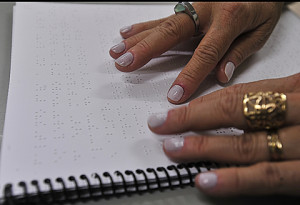
Many years ago, I participated in a powerful American Association of School Librarians professional development experience focused on advocacy. To say that it turned my ideas about advocacy upside down would be putting it mildly. I learned that advocacy is not delivering messages about what I value most; rather, advocacy is listening to the priorities of those around me and connecting my goals with theirs. At its best, advocacy is win-win.
Why, then, if the library community has learned this formula for successful advocacy, does it so often seem that we are not winning? Why do so many libraries continue to struggle for funding and awareness? The reality is that effective advocacy must go beyond connecting our goals to those of the constituencies we serve; we must take the next step and move others to take action. Effective advocacy is a long-term commitment to sustainable change. That phrase, “long-term commitment” is enough to make some of us squirm, because at its heart, it means that we must commit to sustaining this change in ourselves and others. What will enable the library community to think and act in a new way and move our communities to action?
I hope the Declaration for the Right to Libraries becomes the powerful advocacy tool we need to inspire us to act. Based on the aspirational goal of libraries changing lives, it affirms the underlying values of the profession and the deep impact of libraries on individuals, families, communities, and our nation. Most importantly, the Declaration calls for action by all ALA members: Sign the document and stand up for the right to libraries. But the act of signing is just the beginning. What actions must we take in our libraries and our communities if we are to create libraries that truly change lives?
We have a test case right now. Let’s see what we are made of. School libraries are in critical need of effective advocacy. How many school libraries in your community have been closed, the credentialed librarian eliminated or put on part-time status, the collection woefully underfunded, and the technology and electronic access given low budget priority? And the more important question is: How many children and young adults in your community have poor development of information skills, limited or nonexistent access to computer technology and the internet, few books for independent reading in the home, and no regular contact with a librarian of any kind (public or school)?
As a library community, we must band together to demand the right of our young people to good school libraries. ALA has taken on two challenges this year: a national campaign advocating for school libraries and a nationwide rollout of the Declaration for the Right to Libraries. In October, we will have the perfect opportunity to combine the two. When parents visit schools for open-school night this fall, school libraries across the country will hold signing ceremonies for parents, students, teachers, administrators, community members, and public officials to come together in active and vocal support for their local school library. Each community will then decide how to sustain the momentum by undertaking strategic actions that strengthen the entire fabric of libraries.
To paraphrase Arlo Guthrie’s lyrics in the song “Alice’s Restaurant,” “if 50 people a day [sign the Declaration], then people will think it’s a movement.” As indeed it is—the America’s Right to Libraries Movement. Join. Hold a signing ceremony in your library. Follow up with specific actions that bring all types of libraries together and strengthen your place in the community. You will be changing lives.


